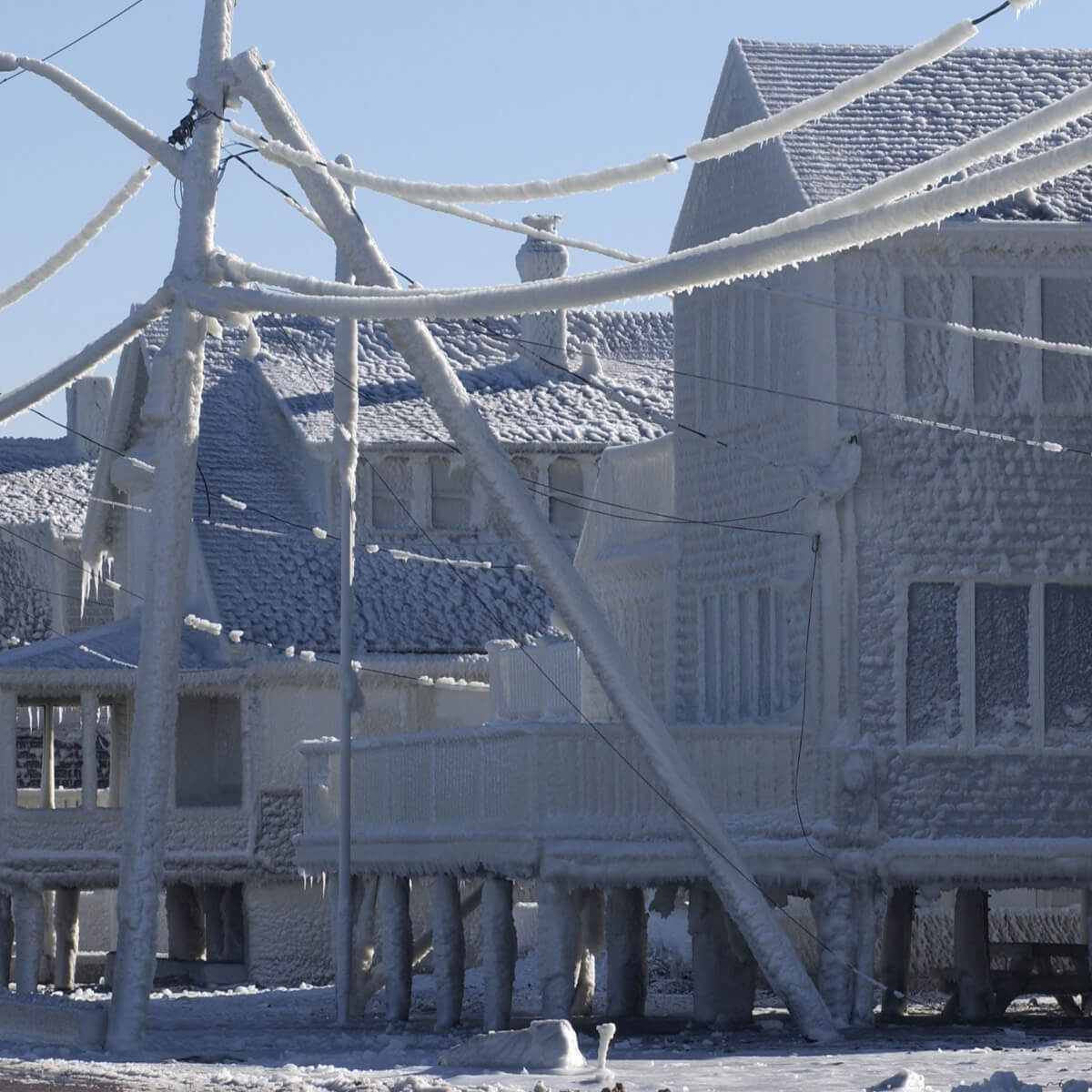Hurricane Ida topped the list of U.S. catastrophe insured losses for 2021, but the February severe winter weather event ranked second – and ultimately became the costliest winter weather insured loss in U.S. history. Those two powerful winter storms demonstrated how a combination of economic, social, and operational factors can become significant drivers of insured and non-insured losses for winter storm perils.
The severe winter weather event began with a long-lasting cold air outbreak on February 6. Temperatures in Texas dropped 50 degrees Fahrenheit lower than the seasonal average, and many states struggled to get above zero degrees Fahrenheit for over a week. During this period, two powerful winter storms (unofficially named Uri and Viola) brought cold temperatures, heavy snowfall, ice accretion, and wind hazard to much of the contiguous U.S. and parts of Canada.
Uri started on February 13 and resulted in over 170 million citizens under weather alerts, with snow stretching from Texas to Washington state. Viola, beginning February 14, compounded the problem with widespread snowstorms in the South and from the West to East Coasts. There were 5.2 million homes without power – 4.5 million in Texas.
The insured losses from the 2021 event totaled nearly US$15 billion according to Swiss Re, and US$23 billion in economic loss, primarily caused by freeze, snow, and wind, with water damage from pipe bursts as the dominant driver of loss. This winter weather event represented five times the average annual loss – in just one event. With more than 220 fatalities, it was also the deadliest in North America since the 1993 Storm of the Century.
Exploring Winter Storm Tail Risk
Understanding North American winter storm tail risk is particularly challenging because material loss events are less frequent than with other perils. In the U.S., over the past 30 years, according to the U.S. National Oceanic and Atmospheric Association (NOAA), the U.S. has only experienced 17 billion-dollar winter storm events (adjusted for the Consumer Price Index). For comparison, the U.S experienced 50 billion-dollar hurricane catastrophes and more than 143 severe convective storm billion-dollar events.
The same challenge applies in Canada. Overall winter storm event frequency is close to that of the U.S., but rarely do events drive material insured losses. The costliest winter storm event on record is the 1998 Quebec Ice Storm, which caused approximately US$2.5 billion in insured losses.
In terms of the February 2021 severe winter weather, the RMS® North America Winterstorm Model captured the key aspects of this major event. The atmospheric physics-based methodology reflected the main hazard characteristics across four sub-perils (wind, snow, ice, and freeze), while the vulnerability component modeled key modes of damage to various types of building characteristics.
However, it also taught RMS and the market that post-event loss amplification (PLA) can be a sizable driver of loss for this peril too, which was a not-modeled source of loss at the time. RMS estimated up to 15 percent of losses originated from PLA-driven factors, such as burst pipes in commercial buildings that were unoccupied due to the ongoing COVID-19 pandemic, which took longer to identify and fix.
Overall, the February 2021 event – among other historical winter weather events, data, and research over the last 10+ years – presented a chance for RMS to validate our existing winter storm solution and identify opportunities for future improvement. These opportunities included more flexible model settings to support a client’s view of risk or validation and sensitivity testing, which ultimately supports better pricing, portfolio management, and risk transfer decisions in the (re)insurance marketplace.
Introducing Version 22 RMS North America Winterstorm Model
As part of the Version 22 release, RMS is updating our North America Winterstorm Model. To help our customers better price winter storm risk, RMS has incorporated a wealth of new market data into the model, accessing over US$30 billion in new winter storm industry loss data since 2008. This includes over US$2 billion in new claims data, such as data from the February 2021 severe winter weather event, and a new historical footprint reconstruction of freeze, snow, ice, and wind hazard.
Build a More Customized View of Risk, Based on Unique Market Conditions
Version 22 includes the ability to isolate catastrophic or non-catastrophic events from the stochastic event set. With this functionality, users can choose whether to run the full stochastic event set or to isolate high- or low-loss events, compare results with industry data, or use different methods to price catastrophe versus attritional event losses.
The updated model includes new high and low alternative sensitivity settings to characterize the uncertainty in vulnerability. This enables users to stress test model results by providing scenarios that represent the variability in the ratio of modeled losses to incurred claims between different portfolios of insured exposure.
It also includes PLA functionality to provide a view where claims cost may exceed normal costs of settlement due to a combination of economic, social, and/or operational factors, as we saw in the February 2021 event. The inclusion of vulnerability sensitivity settings and PLA functionality are included in the model for the first time, with these features built into other RMS models, such as the North Atlantic Hurricane Models.
Better Risk Pricing From New Science and Updated Vulnerability
Alongside learnings from significant events, RMS also incorporated a wealth of new data, original research from our engineering teams, and feedback gathered from clients and the market over the last 10+ years.
This includes new local building codes and structural performance, roofing, and construction practices, as well as recent plumbing installation requirements and new ice-dam prevention requirements from the National Roofing Contractors Association. With this information, we have a better understanding of the relationship between hazard and corresponding loss during winter weather events.
Utilizing this information, the Version 22 North America Winterstorm Model includes extensive vulnerability updates to structural building and contents curves and relativities for all primary building characteristics, as well as updated vulnerability regions, a recalibrated wind vulnerability module, and business interruption updates.
In addition, the Version 22 model has detailed loss models, aggregate loss models, industry exposure databases, industry loss curves, and customized model add-ons like marine cargo. It enables everyone across your risk organization to bring robust winter storm insights into your day-to-day risk management workflows.
As we have seen in recent years and corresponding event losses, winter storm should no longer be considered a “secondary” or “attritional” peril. The updated RMS North America Winterstorm Model in Version 22 provides (re)insurers with the latest view of the winter storm risk landscape and market conditions.
The model includes more sources of modeled loss, new capabilities to stress test and validate views of risk, and a substantially updated vulnerability component to support better risk differentiation – all of which inform competitive selection, pricing, and portfolio management decisions.
Find more information on the RMS North America Winterstorm Model.







